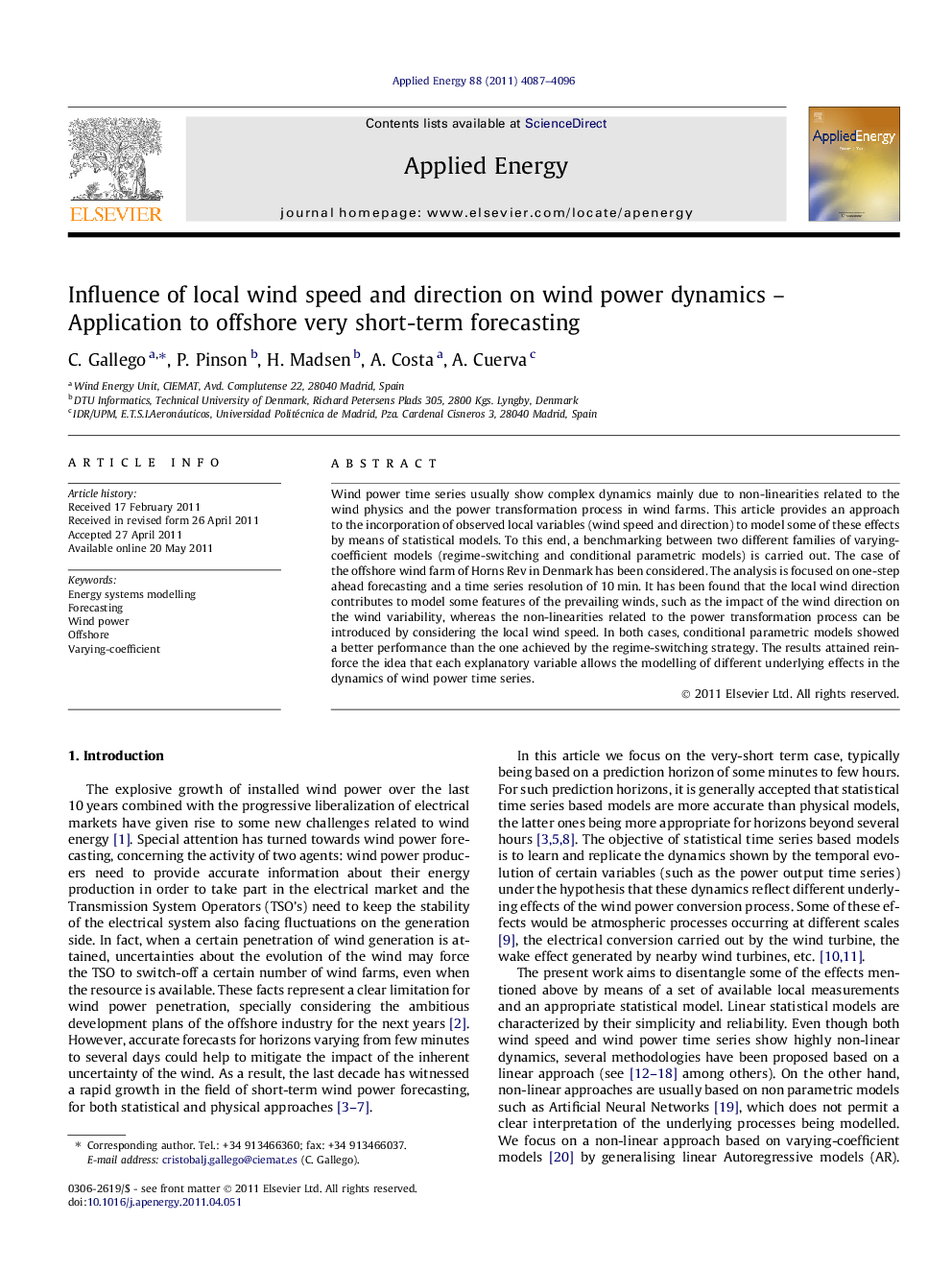| Article ID | Journal | Published Year | Pages | File Type |
|---|---|---|---|---|
| 244217 | Applied Energy | 2011 | 10 Pages |
Wind power time series usually show complex dynamics mainly due to non-linearities related to the wind physics and the power transformation process in wind farms. This article provides an approach to the incorporation of observed local variables (wind speed and direction) to model some of these effects by means of statistical models. To this end, a benchmarking between two different families of varying-coefficient models (regime-switching and conditional parametric models) is carried out. The case of the offshore wind farm of Horns Rev in Denmark has been considered. The analysis is focused on one-step ahead forecasting and a time series resolution of 10 min. It has been found that the local wind direction contributes to model some features of the prevailing winds, such as the impact of the wind direction on the wind variability, whereas the non-linearities related to the power transformation process can be introduced by considering the local wind speed. In both cases, conditional parametric models showed a better performance than the one achieved by the regime-switching strategy. The results attained reinforce the idea that each explanatory variable allows the modelling of different underlying effects in the dynamics of wind power time series.
► Very short-term wind power forecasting benefits from local measurements. ► Local wind speed models the nonlinear power curve effect on wind power time series. ► Local wind direction provides information to model synoptic effects. ► Conditional parametric models were preferable to regime switching models.
